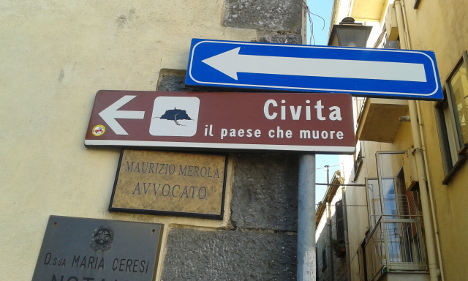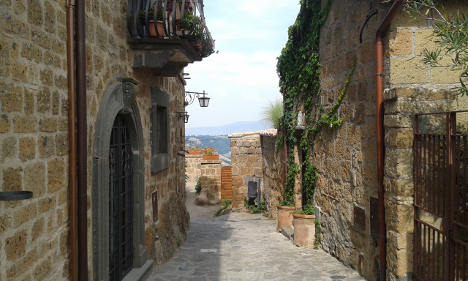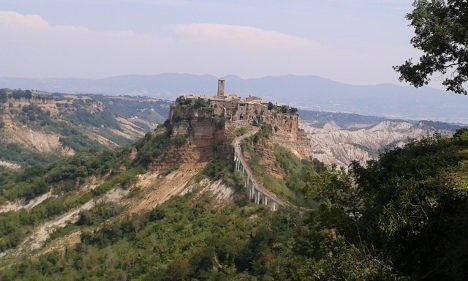There is no post office, no supermarket, no chemist, no hospital and the one school shut down decades ago.
All that is left of Civita di Bagnoregio, the Lazio town founded by the Etruscans more than 2,500 years ago, is a cluster of holiday homes, a B&B, restaurants and souvenir shops, all catering to the tourists who come to marvel at and indulge this gem of Italy’s past.
Oh, and a steadfast full-time population of six, a number that swells to about 100 at the height of summer.
One who decided to stay, as all her childhood friends fled, is Arianna, the 39-year-old owner of La Cantina di Arianna, a restaurant that forms part of her ancestral home.
“At one time, it was a place that had a lovely community spirit, there was a lot of human contact; we were like one big family,” she told The Local.
“All that has gone now, but so much of my family history is here…my livelihood is here… and I don’t want to live anywhere else.”
Arianna, whose ancestors came to the town more than 1,000 years ago and worked as farmers in the surrounding area, grew up on the three or four winding streets that make up Civita, only leaving to cross the footbridge to nearby Bagnoregio to attend school.

Once considered the “jewel city of the Tiber Valley”, Civita started to decline in the 17th century, due to earthquakes and soil erosion which sent many of its medieval buildings tumbling down the cliffs, and the inhabitants fleeing to nearby towns.
Nowadays the town, which sits precariously atop a precipice in a fairytale-like setting, can only be reached by a narrow footbridge – a walk, much of it an incline, that takes about ten minutes.
The town is inaccessible to vehicles other than mopeds, which is how Arianna receives most of the supplies for her restaurant.
Civita’s survival has always been dictated by the forces of nature – landslides in particular – as well as the money then needed to repair the damage.
But it was only in 2013 that a €1.50 fee to enter the town was introduced, in an effort to raise funds for its upkeep.

Some of this effort can be seen in the way the pretty, narrow streets and main square are meticulously maintained.
With road signs leading visitors to “the dying town” from Bagnoregio, the nickname is also an alluring way of attracting curious sightseers.
“There’s been a big increase in the number of tourists coming over the past few years,” said Arianna.
“Especially from China.”
But despite the connotations of a rapidly approaching death, the town has become somewhat of a mecca for hippies and artists, albeit wealthy ones.
The majority of the houses are second homes, used by the owners for holidays and at weekends, Arianna said.
Earlier this year, a group of Italian artists and cultural heavyweights, including Ennio Morricone, the film composer, got together to appeal for Civita to be saved.
The petition, also signed by Italy’s former president, Giorgio Napoletano, called on the town to be classed as a Unesco World Heritage site.
But the locals believe a lot more needs to be done, especially when it comes to protecting the town from landslides.
“There’s been a promise of money to be put towards this,” Arianna said.
“But whether this happens, remains to be seen. There are many towns across Italy in the same situation.”
But not all as stunning as Civita.
Curious to take a look? Then here’s how to get there:
Unless you have a car, to reach Bagnoregio you can take a train from Rome to Orvieto (1 hour 10/20 mins) and catch a blue Cotral bus from there. Bus stops are near the train station. Bear in mind that buses do not run on Sundays and public holidays. The rambling bus takes about 40 minutes, and Civita is a 30 minute walk from the bus stop, including the bridge crossing.



 Please whitelist us to continue reading.
Please whitelist us to continue reading.
Member comments